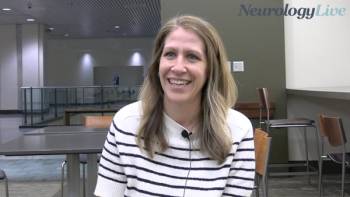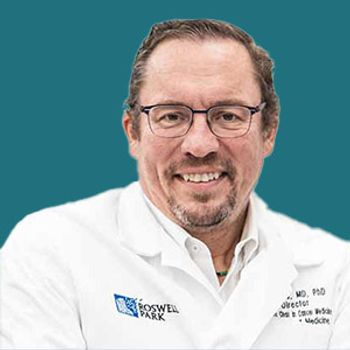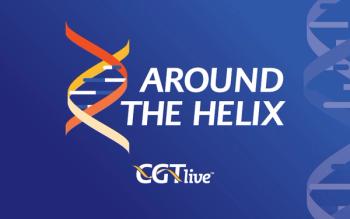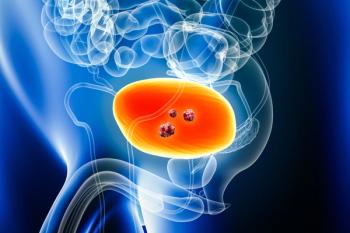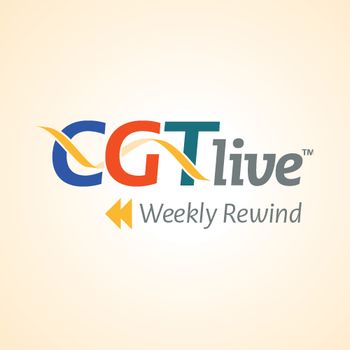
Great Ormond Street Hospital Tackling Chronic Granulomatous Disease With Gene Therapy in Phase 1/2 Trial
The nonrandomized, open-label clinical trial for pCHIM-p47, which launched on March 20, 2023, is taking place at Great Ormond Street Hospital in London.
Great Ormond Street Hospital for Children National Health Service Foundation Trust is currently evaluating pCHIM-p47, a lentiviral vector-based gene therapy product, for the treatment of a form of chronic granulomatous disease (CGD) referred to as p47 AR-CGD in a phase 1/2 clinical trial (NCT05207657).1 For this installment of Clinical Trials in Progress, CGTLive® has decided to take a closer look at this active study.
pCHIM-p47 is intended to provide a functional copy of NCF1, mutations in which are the cause of p47 AR-CGD. The treatment involves collection of patients’ CD34-positive blood-forming stem cells from the bone marrow, transduction of these cells with a lentiviral vector carrying NCF1, and subsequent reinfusion of the cells into the patient. pCHIM-p47 is intended to provide an alternative treatment option for p47 AR-CGD to matched sibling donor bone marrow transplant, which is the current standard of care. Although a matched sibling donor bone marrow transplant can be curative for CGD, such a donor is not always available and transplantations from unmatched donors have substantially worse outcomes for patients with CGD.
The nonrandomized, open-label clinical trial for pCHIM-p47, which launched on March 20, 2023, is expected to enroll approximately 5 patients in total and is taking place at Great Ormond Street Hospital in London, United Kingdom. According to the clinicaltrials.gov page for the study, which was most recently updated on May 16, 2025, the study is currently recruiting patients. The estimated completion date for the trial is April 1, 2029. Claire Booth, MBBS, PhD, a consultant pediatric immunologist at Great Ormond Street Hospital, is serving as the principal investigator for the study.
The trial’s primary end points will assess safety and efficacy. Observation of adverse events after treatment will form the basis of the safety assessment along with lentivirus integration site analysis in different cell subpopulations, with the intent of evaluating specific clonal expansions. Furthermore, droplet digital polymerase chain reaction methodology will be used to quantify transgene copy numbers on sorted cell populations. The time frame for safety analysis is 6 months to 1 year post treatment. Efficacy of the gene therapy treatment will be assessed with regard to treatment failure, which is defined by the nonpresence of NCF1 functioning granulocytes or as less than 5% of expressing cells 12 months after the treatment. A dihydrorhodamine test will be used to assess the efficacy end point.
The trial is open to patients 23 months or older who have p47 AR-CGD as confirmed by DNA sequencing and nonpresence or reduction by more than 95%of hydrogenated nicotinamide adenine dinucleotide phosphate (NADPH) oxidase biochemical activity. Eligible patients must have experienced at least 1 prior, ongoing, or refractory severe infection or inflammatory complication necessitating hospitalization despite conventional therapy. In addition, patients must not have any fully matched 10/10 human leukocyte antigen donor available following an initial search of the National Marrow Donor Program registries within the past year, unless there is an unacceptable risk associated with an allogeneic procedure. Patients must also be free of coinfection with HIV, hepatitis B or C virus, cytomegalovirus (CMV), adenovirus, parvovirus B19, or toxoplasmosis within 8 weeks prior to mobilization, apheresis, or bone marrow harvest. Patients with CMV may be eligible if the infection is controlled.
Patients will be excluded if they have a weight of more than 35 kg. Contraindications for leukapheresis, including hemoglobin levels below 8 g/dL, cardiovascular instability, or severe coagulopathy, will also preclude participation. Additional exclusion criteria cover a broad range of organ system dysfunctions.
Hematologic exclusions include anemia with hemoglobin less than 8 g/dL, neutropenia with absolute granulocyte counts below 1,000/mm3, thrombocytopenia with platelet counts below 150,000/mm3, or prothrombin time or partial thromboplastin time more than twice the upper limit of normal. It is noted that patients with a correctable deficiency controlled by medication may be able to participate.
Patients with cytogenetic abnormalities associated with hematopoietic defects will also be excluded. Pulmonary exclusion criteria include resting oxygen saturation below 90% on room air. Cardiac exclusions include abnormal electrocardiogram results indicating pathology, uncorrected congenital heart malformations with symptoms, active cardiac disease such as congestive heart failure or cyanosis, hypotension, and a left ventricular ejection fraction below 40% on echocardiogram. Neurologic exclusions cover significant abnormalities on examination and uncontrolled seizure disorders. Renal exclusions include serum creatinine levels of 1.5 mg/dL or more, proteinuria of 3+ or greater, or severe serum abnormalities in sodium, potassium, calcium, and magnesium at grade 3 or 4 according to the Common Terminology Criteria for Adverse Events version 4.0. Hepatic exclusions include serum transaminase levels more than 5 times the upper limit of normal, serum bilirubin levels more than twice the upper limit of normal, or serum glucose levels more than 1.5 times the upper limit of normal. Patients who show evidence of active malignant disease will also be excluded.
Additional exclusions apply to patients with an expected survival of less than 6 months, major congenital anomalies, or ineligibility for autologous hematopoietic stem cell (HSC) transplant by trial site criteria. Contraindications to conditioning medications, known sensitivity to busulfan, or administration of interferon gamma within 30 days of infusion of the study therapy will also preclude participation. Patients will also not be eligible if they have taken part in another experimental therapeutic protocol within 6 months. Patients may also be excluded if, in the judgment of the investigator, there are any additional conditions that would compromise safety, adherence, or successful completion of the trial, or if the patient or their parent or guardian is unable or unwilling to comply with protocol requirements.
Notably, Booth previously worked on a preclinical study evaluating the use of lentiviral gene therapy to treat phosphorylated protein p47 (p47phox) CGD in human cells, murine cells, and mice.2 The study was published in Gene Therapy in 2020 and demonstrated the ability of the gene therapy to restore expression of p47phox and biochemical NADPH oxidase function in human and murine cells that were deficient in p47phox. In addition, the gene therapy was able to reduce bacterial load in p47phox-null mice with Salmonella serovar Typhimurium compared with mice that were not treated with the gene therapy.
“Taken together, the results presented here show that our lentiviral gene therapy protocol by the use of the pCCLCHIMp47phox vector can stably restore p47phox expression and NADPH oxidase function in relevant cells and ameliorate infections,” Booth and colleagues wrote in the paper’s discussion section.2 “Targeted insertion of the therapeutic NCF1 coding sequence in the AAVS1 safe harbour locus or targeted correction of the GT base pair deletion at the start of NCF1 exon 2 have recently been proposed as alternatives to a gene addition protocol. However, despite rapid advances in the gene editing field for monogenic blood disorders, protocols that contemplate the need for cell proliferation/activation in order to promote homology-directed repair could prove unsuited for HSC that [is] already compromised by chronic inflammation and may show an accelerated loss of stem cell phenotype upon culture. We believe that a lentiviral transduction protocol that entails short-term ex vivo cell culture will offer a rationale treatment option for p47phox CGD.”
REFERENCES
1. Lentiviral gene therapy for p47 AR-CGD. ClinicalTrials.gov. Accessed August 18, 2025. https://clinicaltrials.gov/study/NCT05207657
2. Schejtman A, Aragão-Filho WC, Clare S, et al. Lentiviral gene therapy rescues p47phox chronic granulomatous disease and the ability to fight Salmonella infection in mice. Gene Ther. 2020;27(9):459-469.
Newsletter
Stay at the forefront of cutting-edge science with CGT—your direct line to expert insights, breakthrough data, and real-time coverage of the latest advancements in cell and gene therapy.

